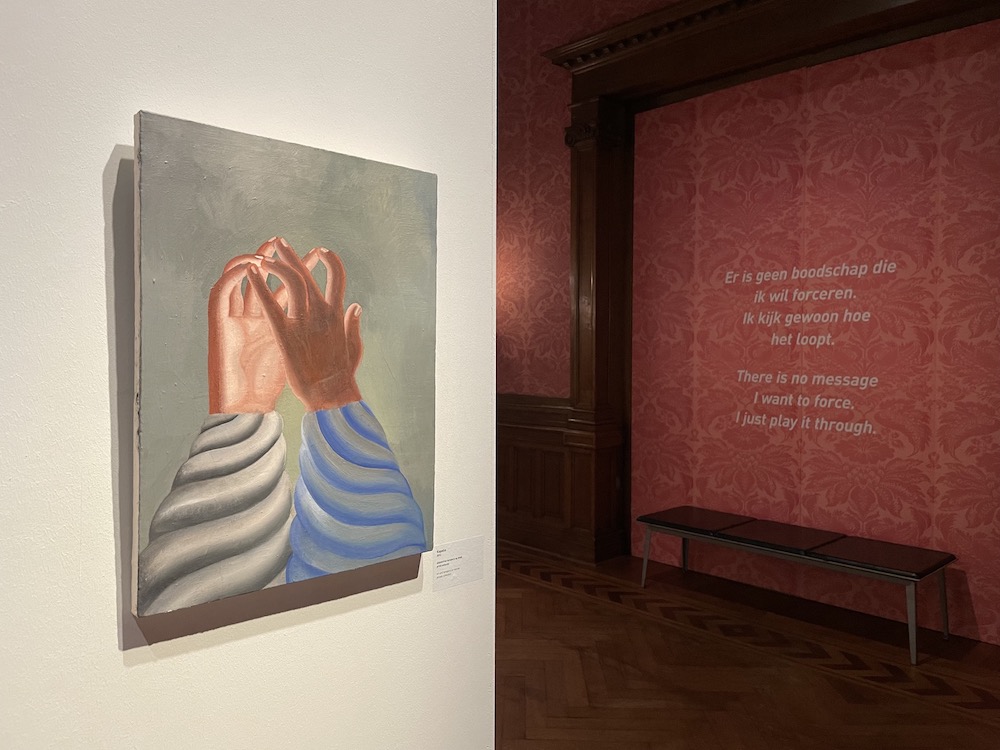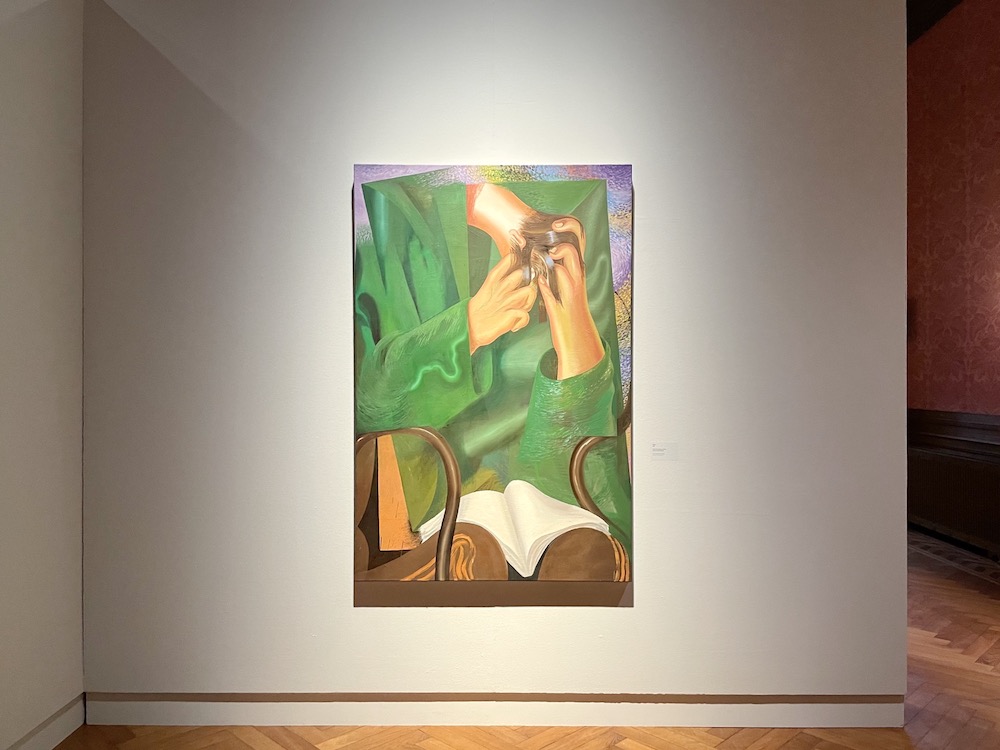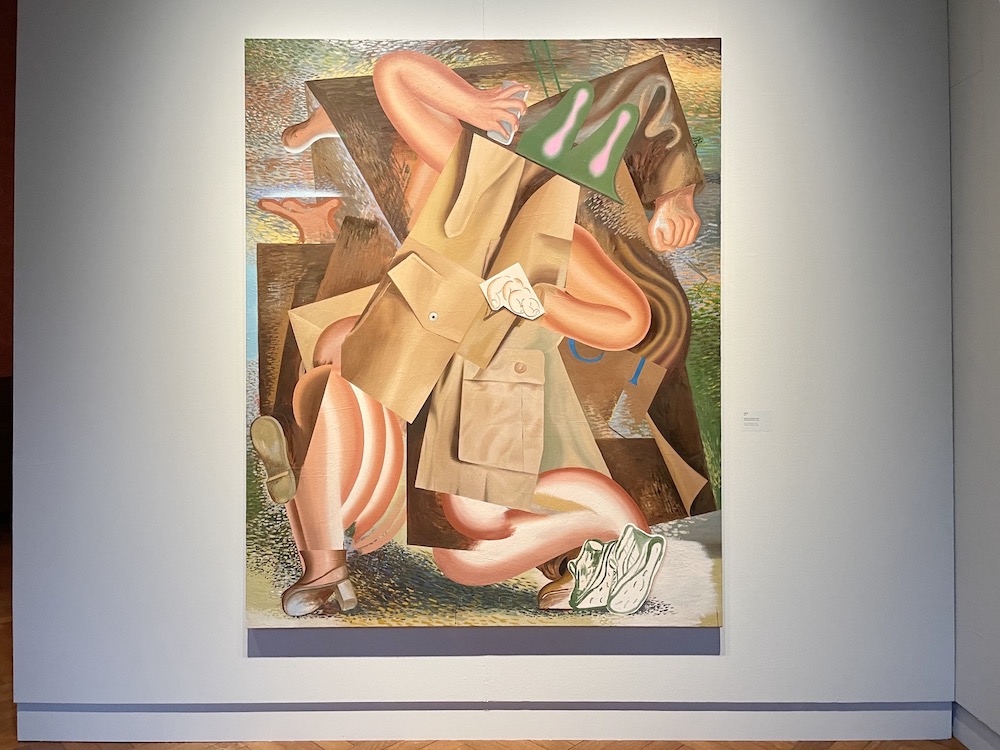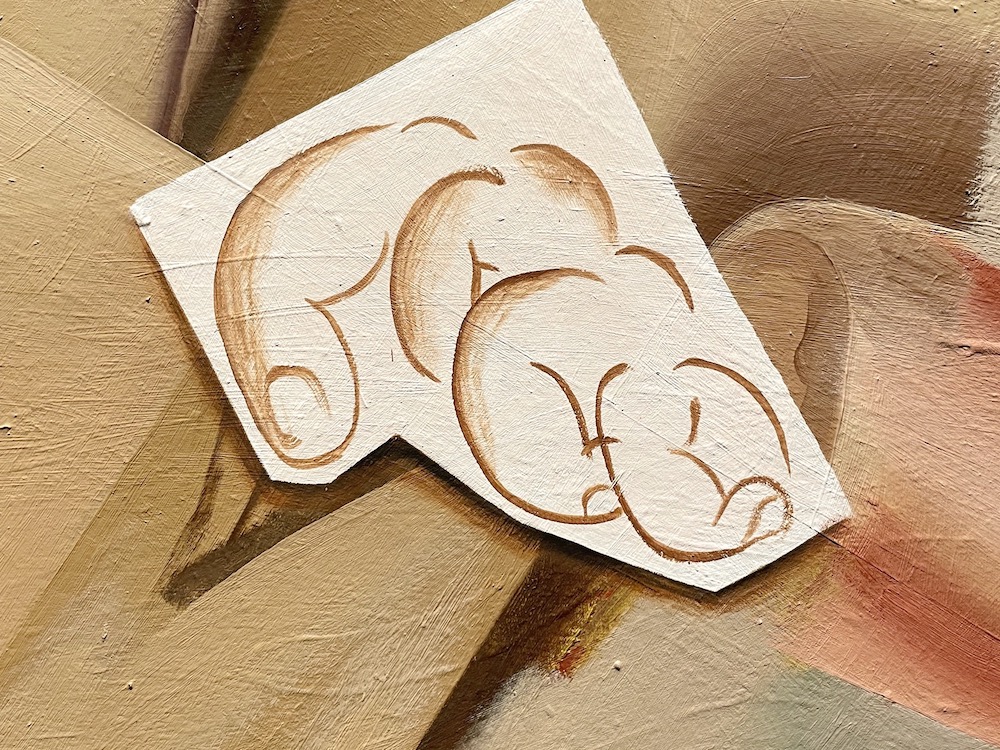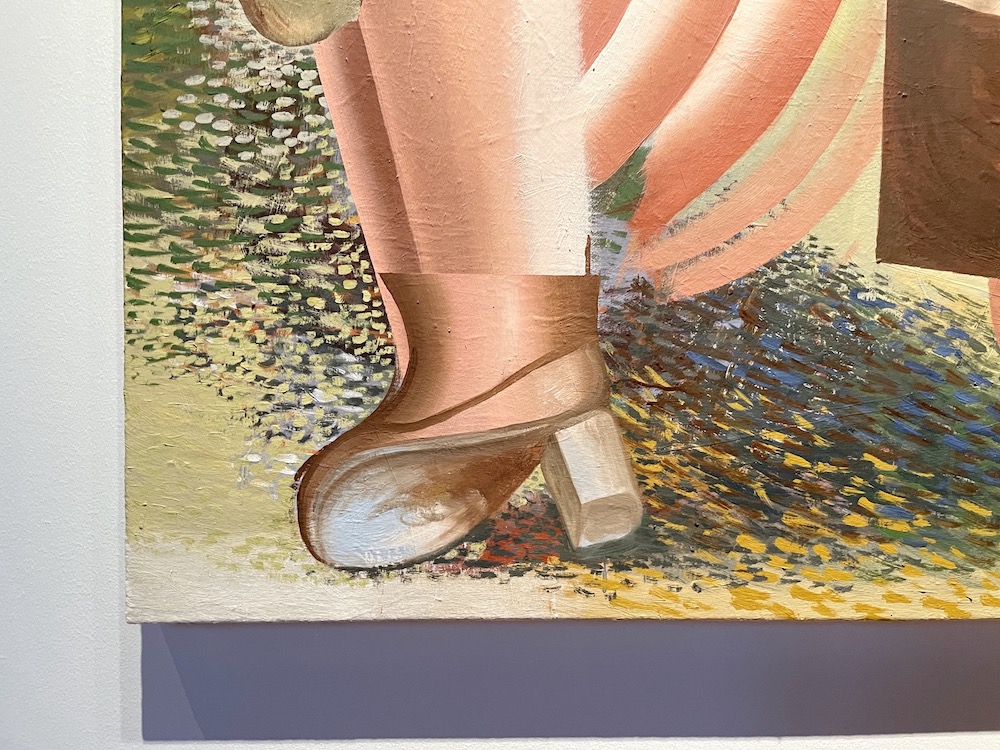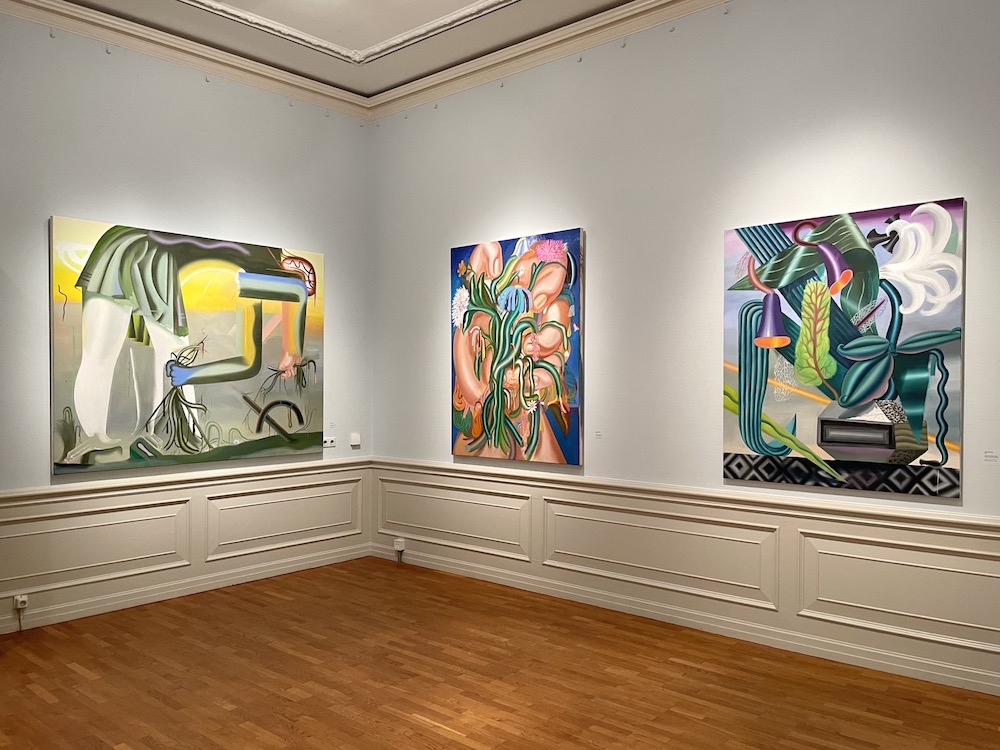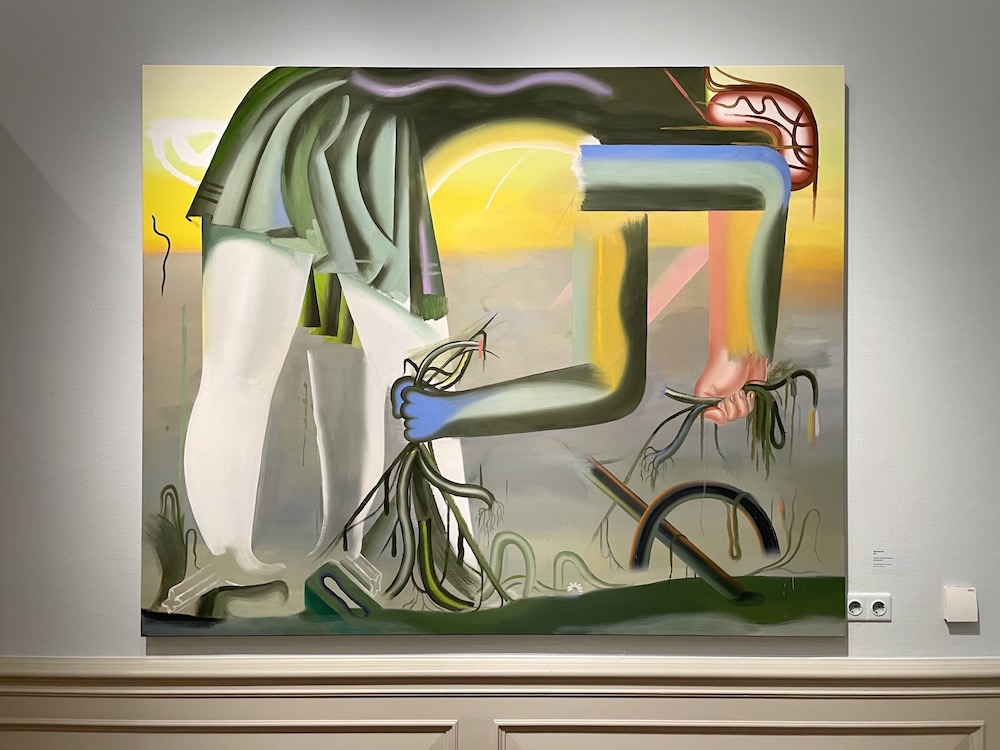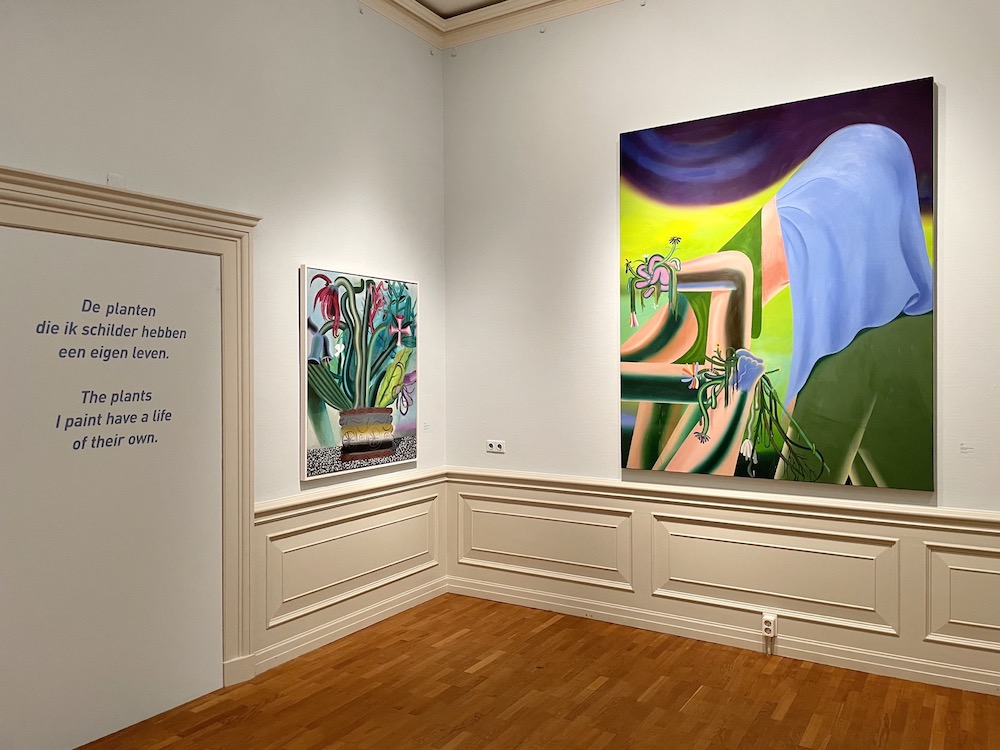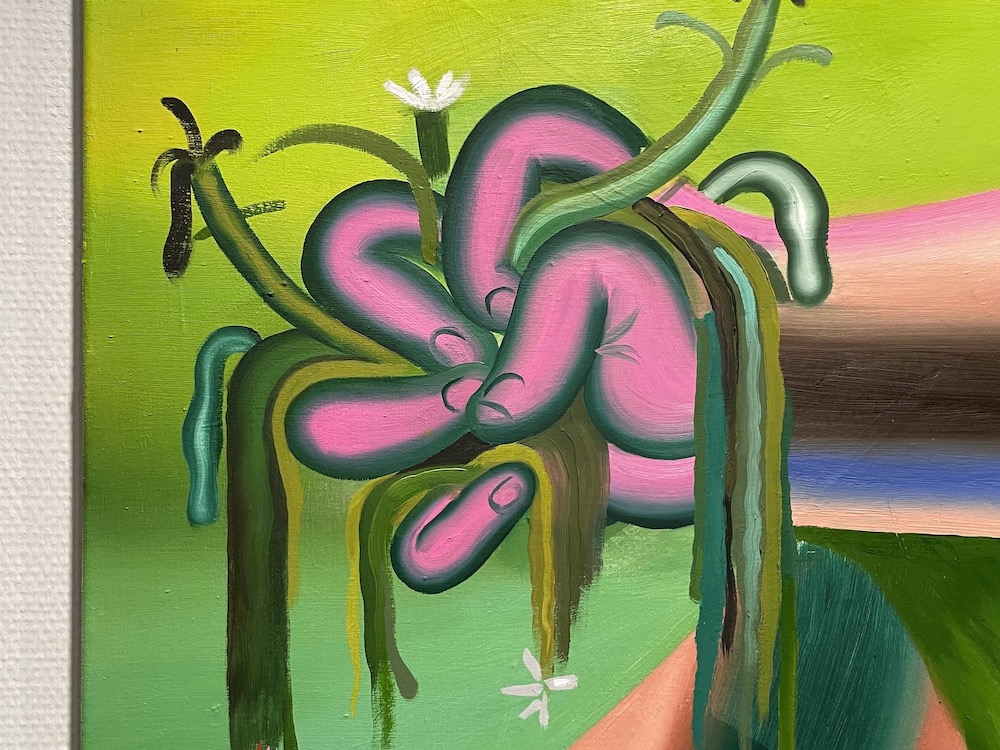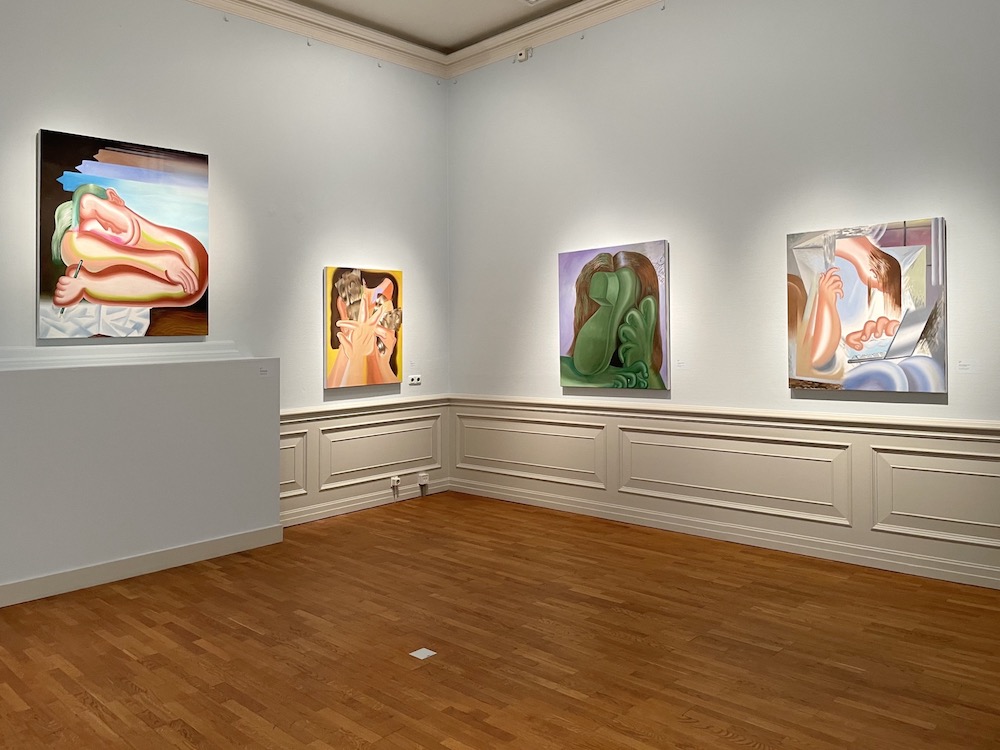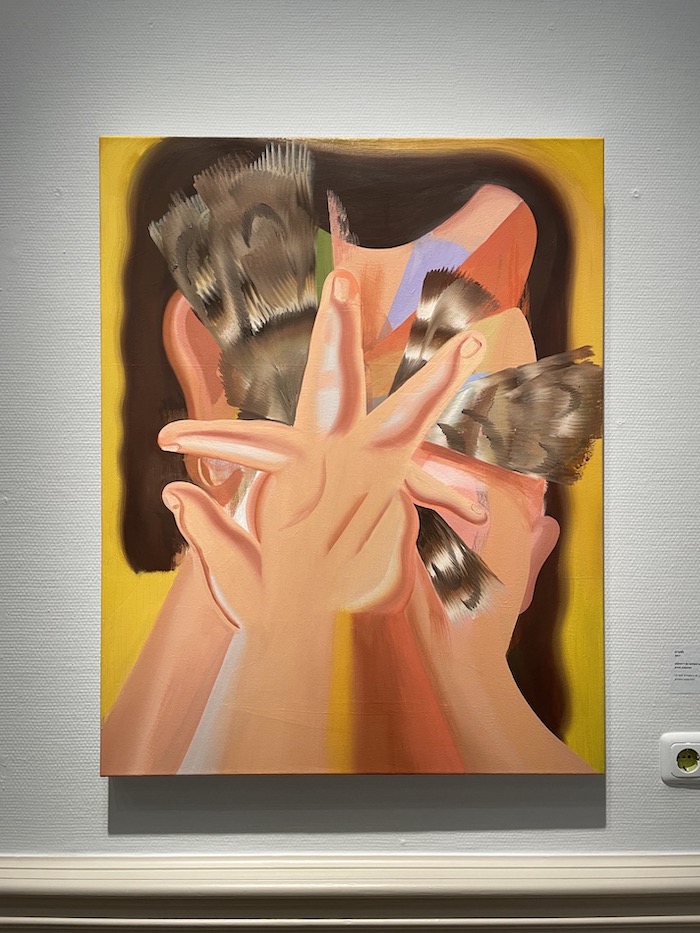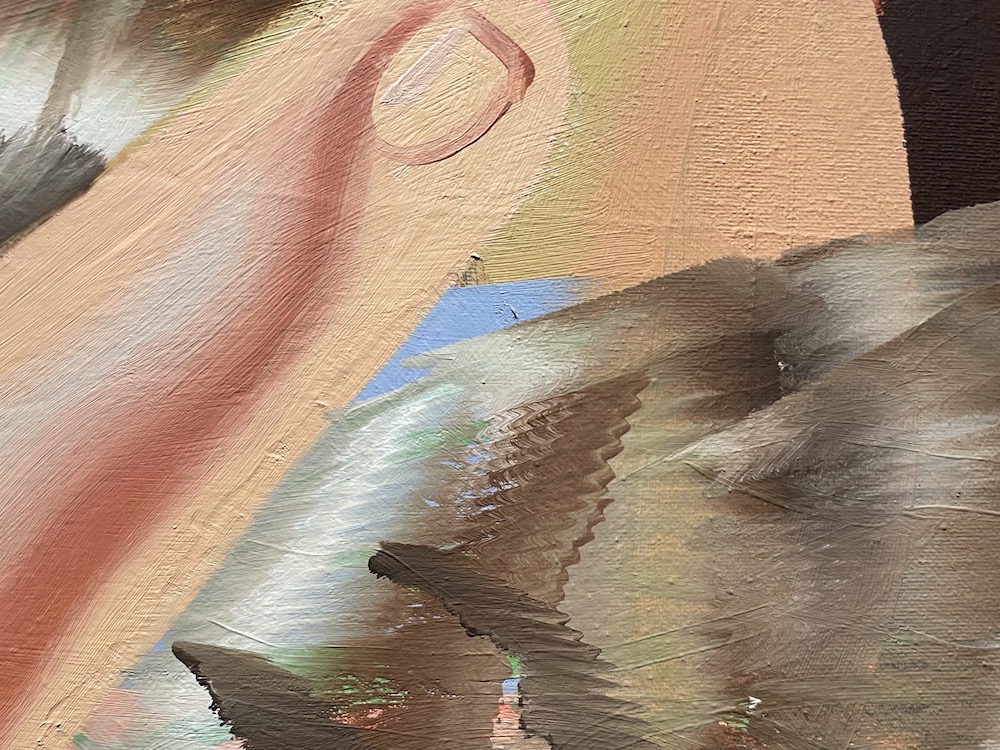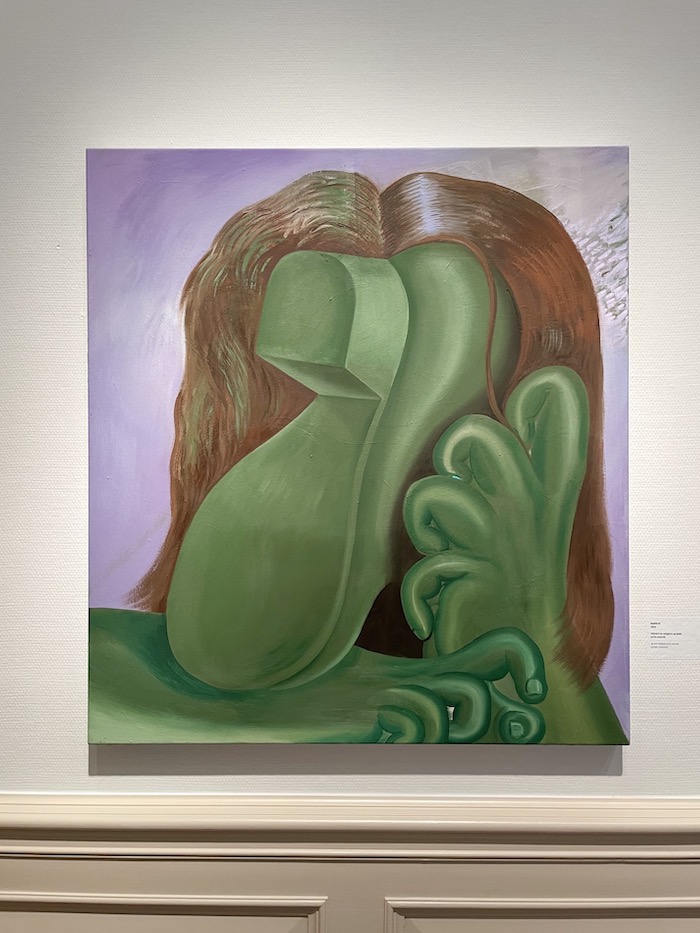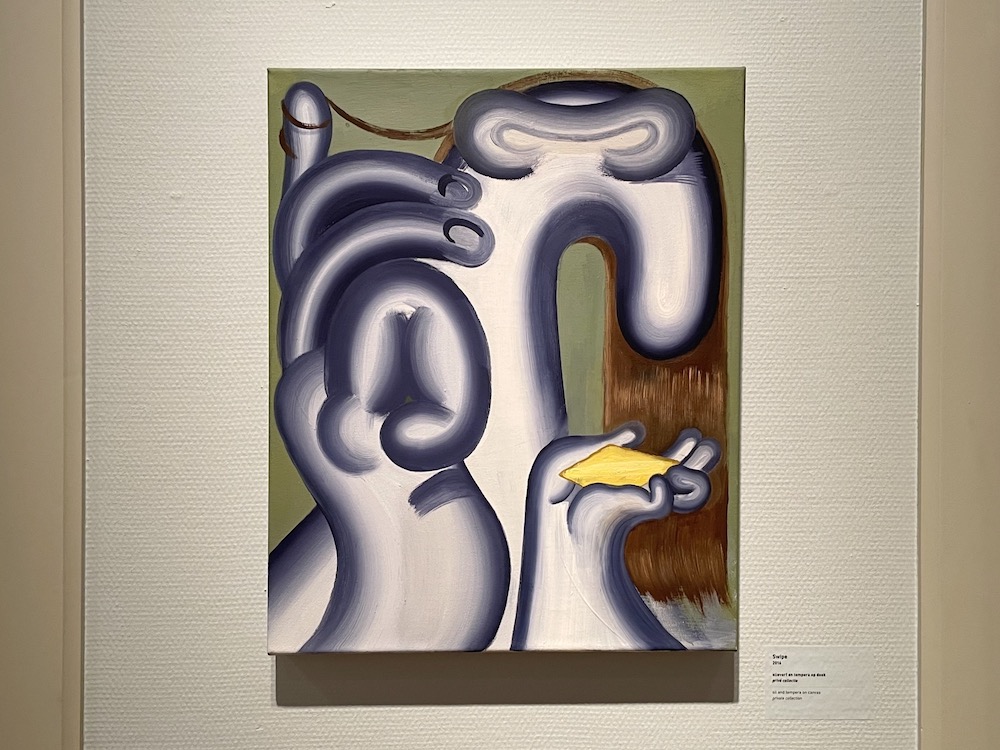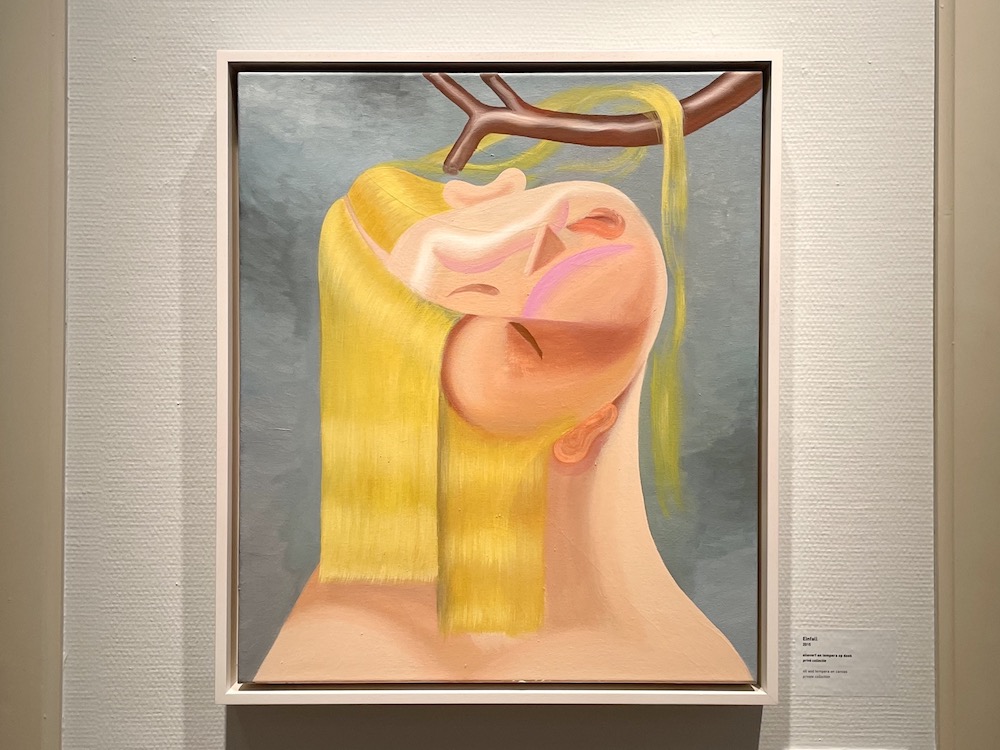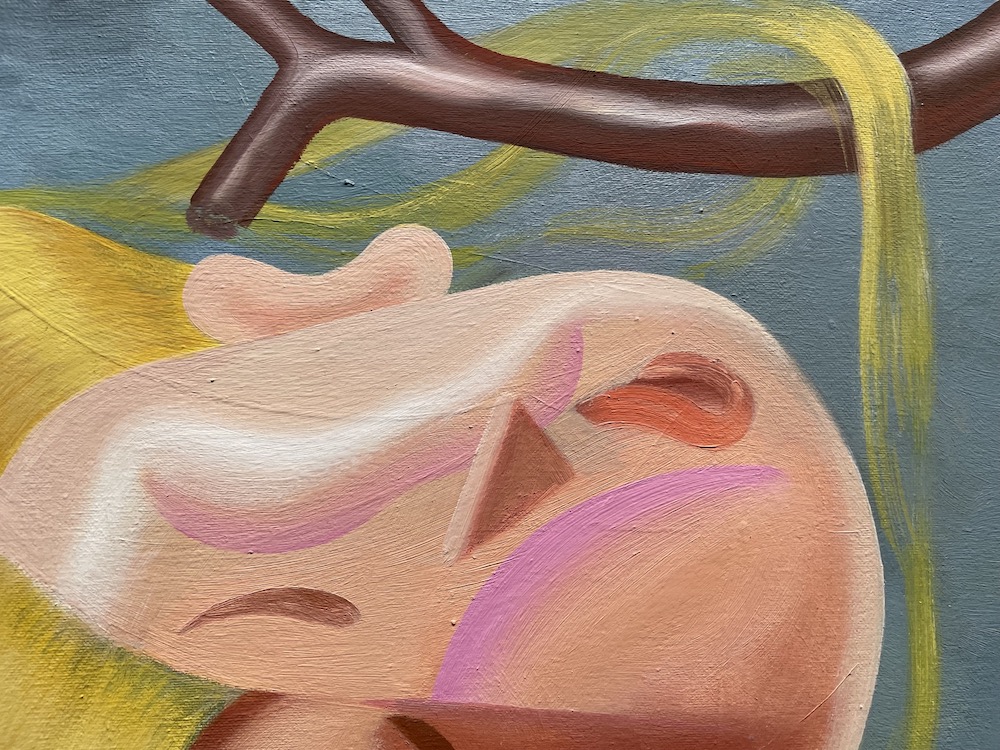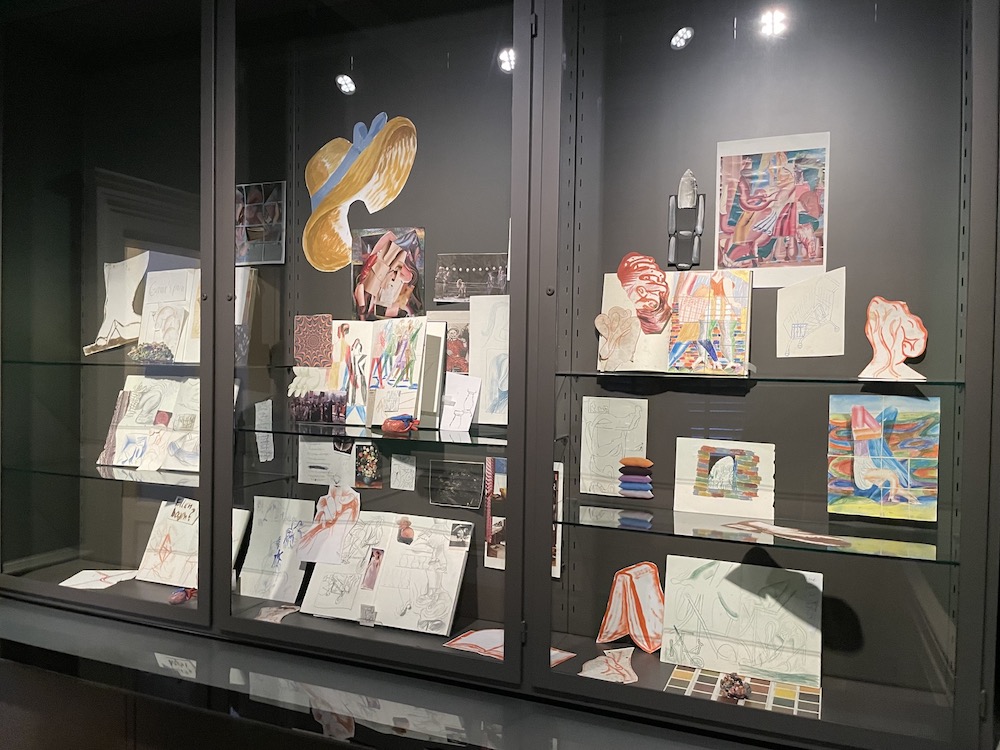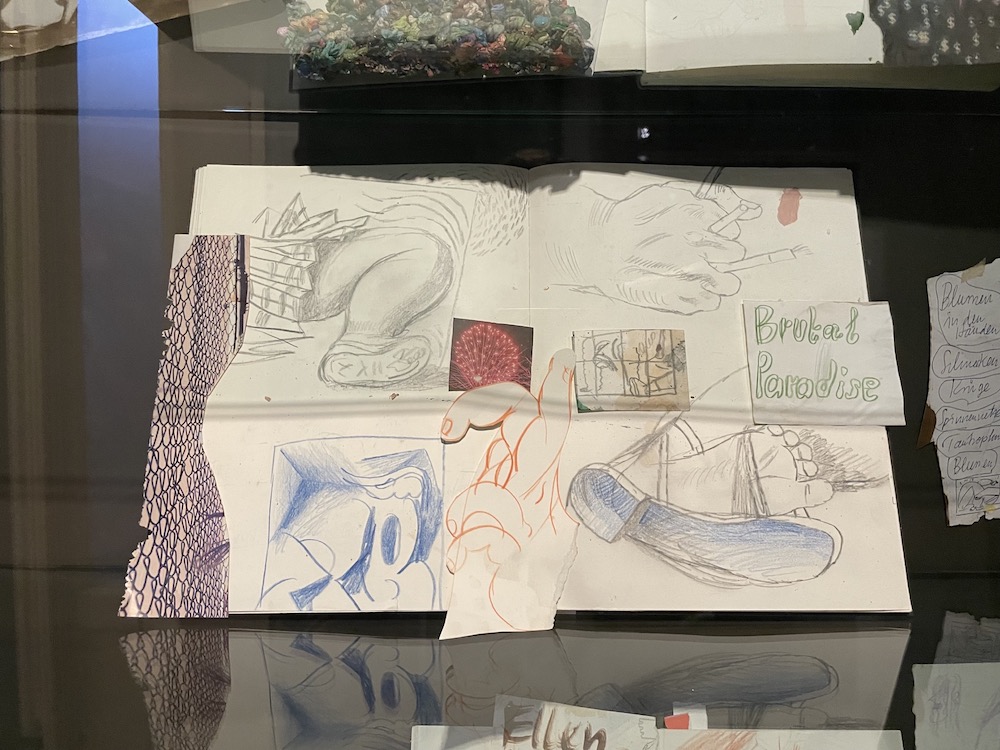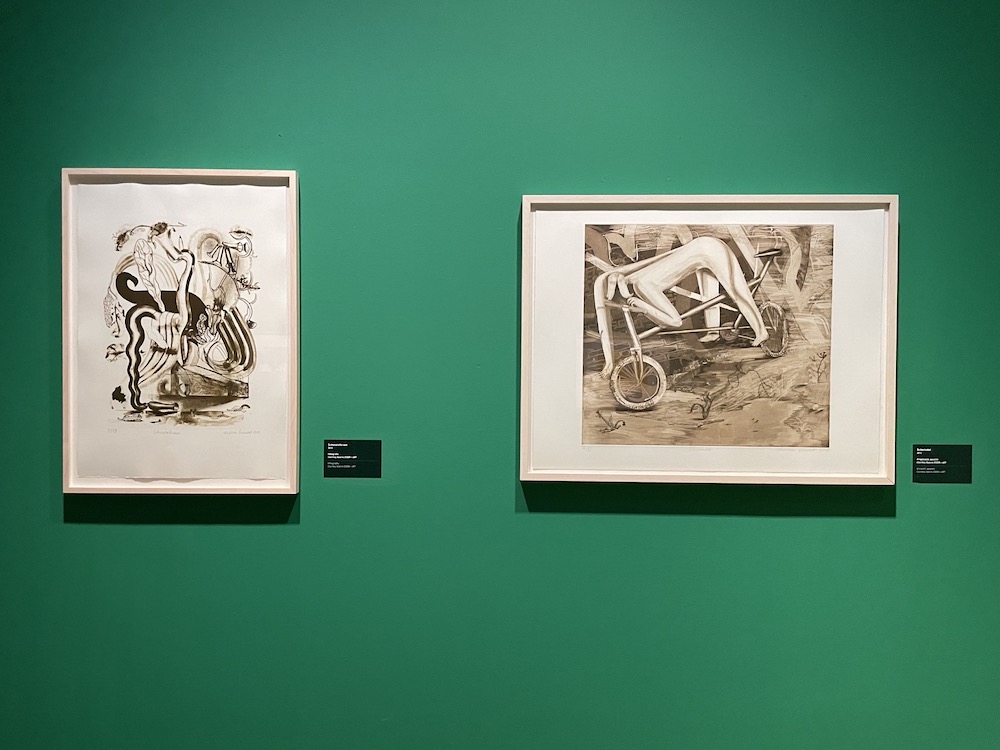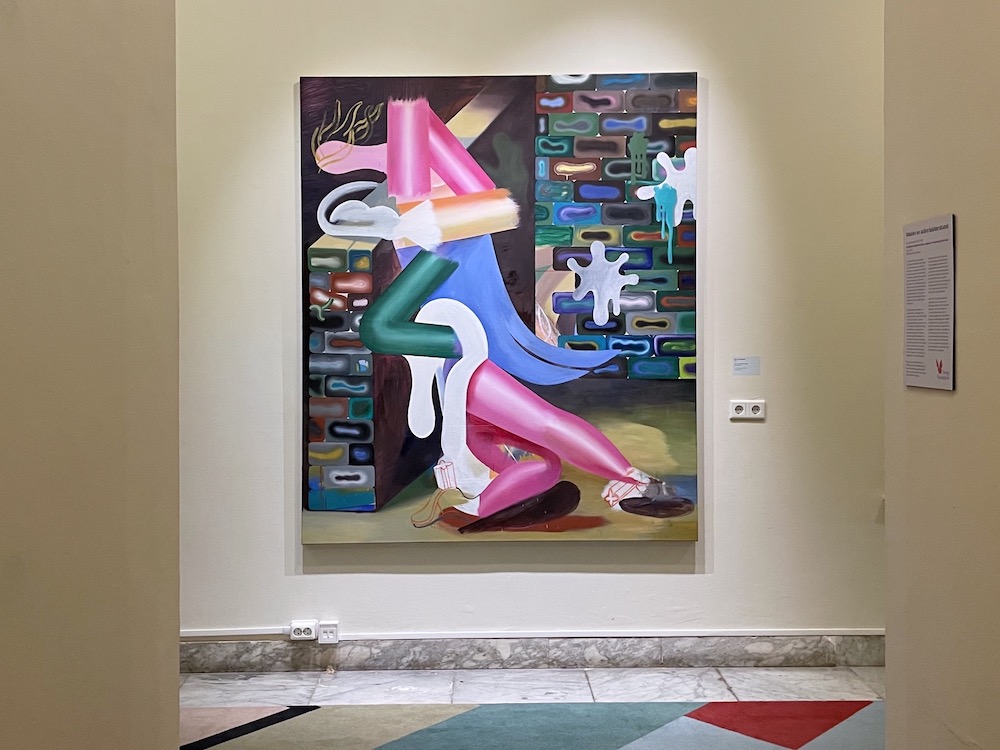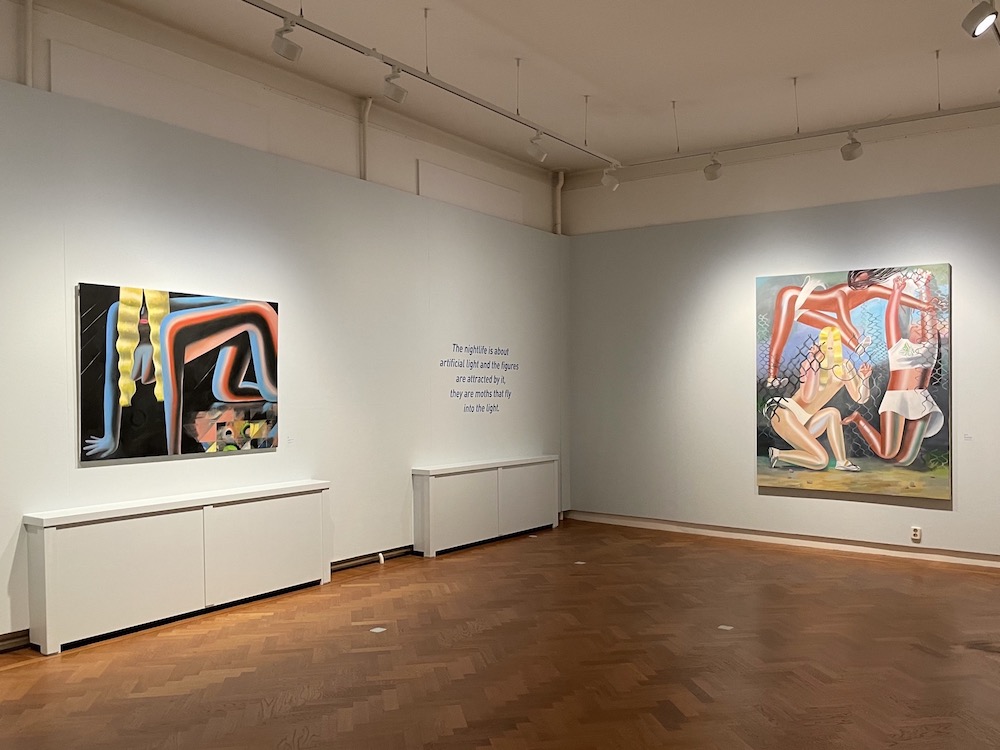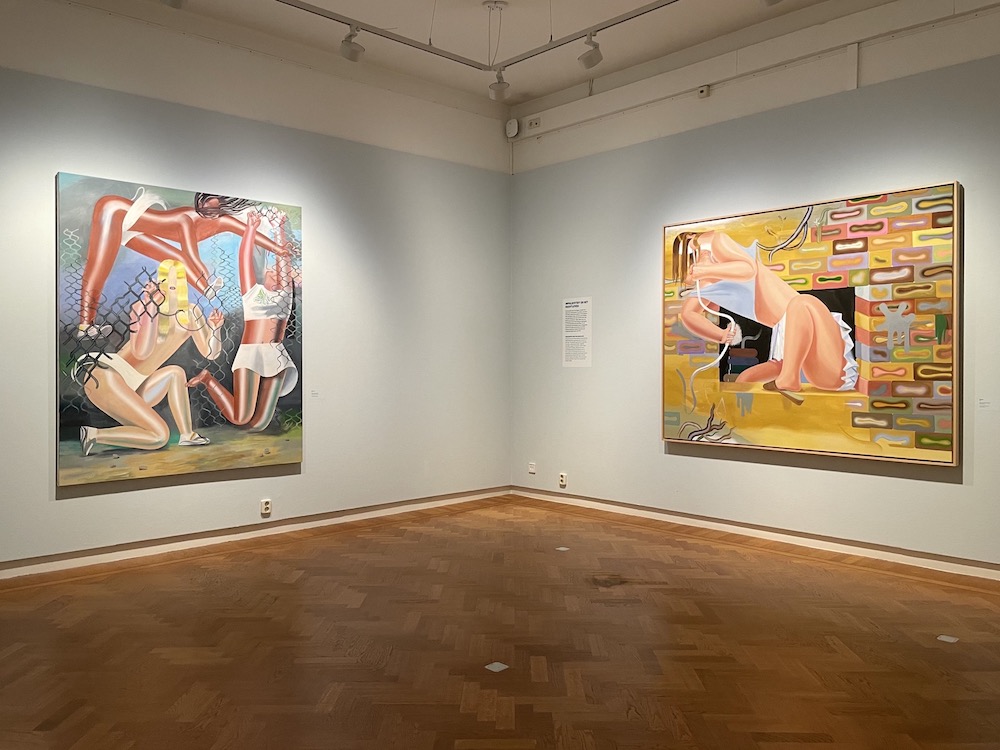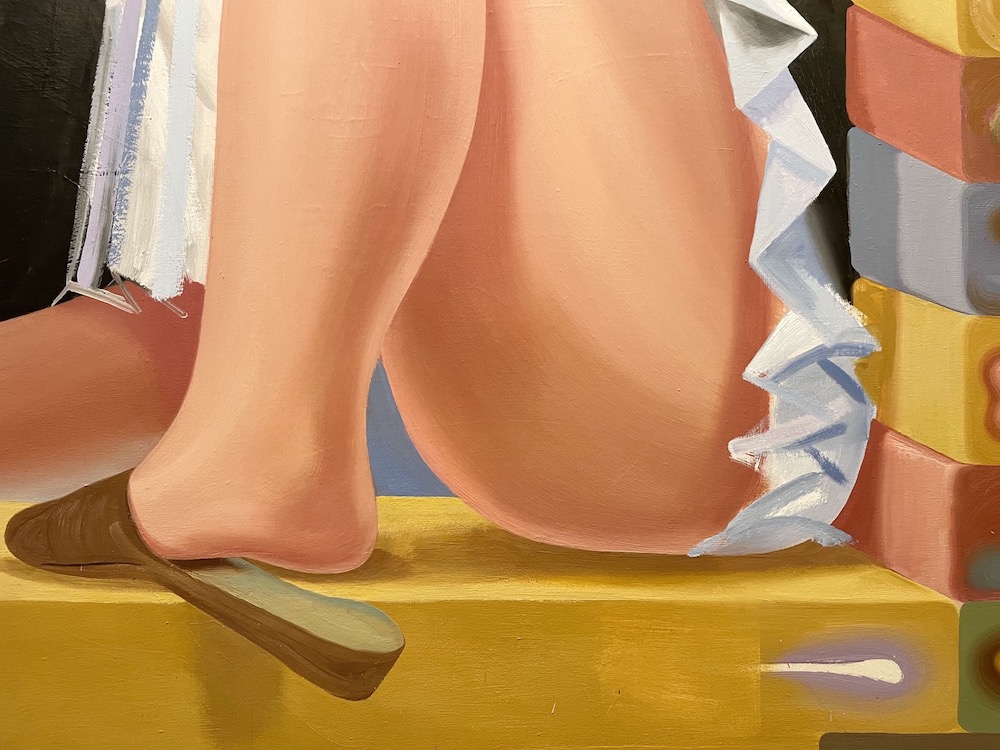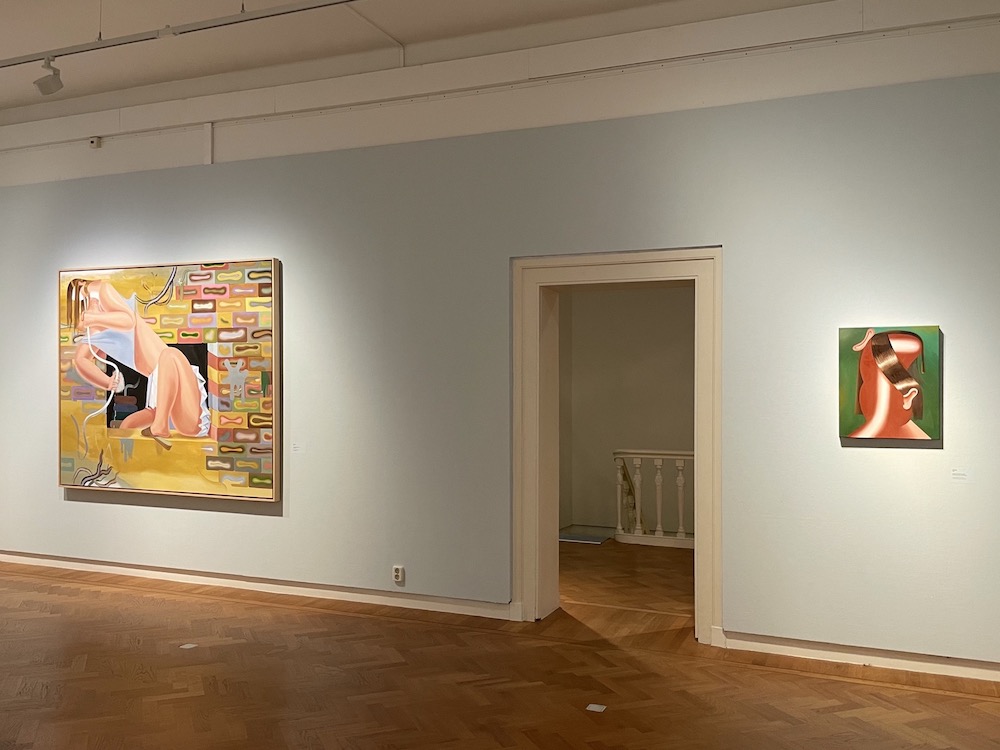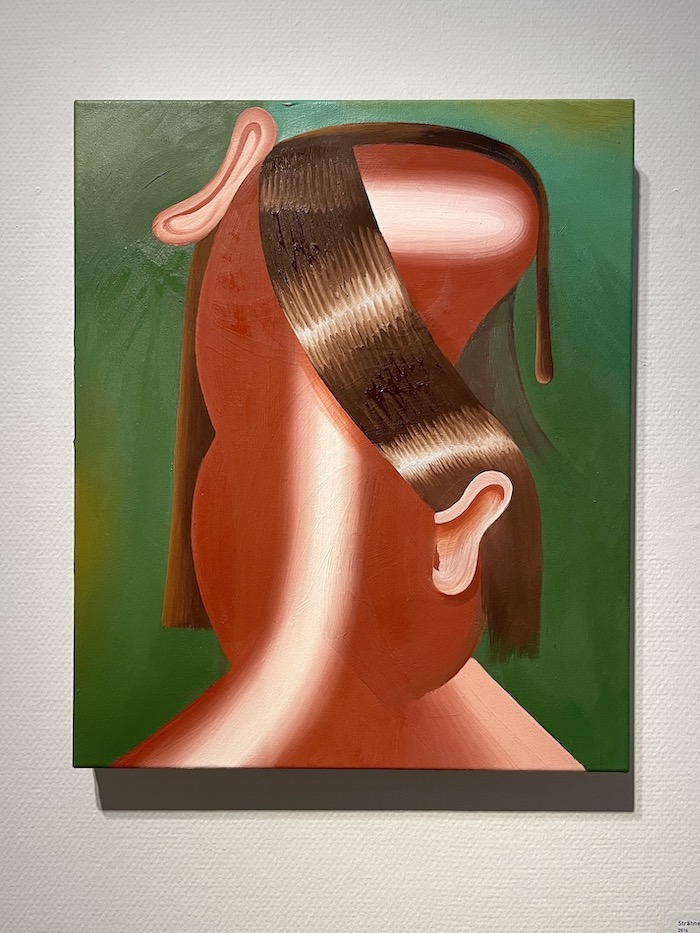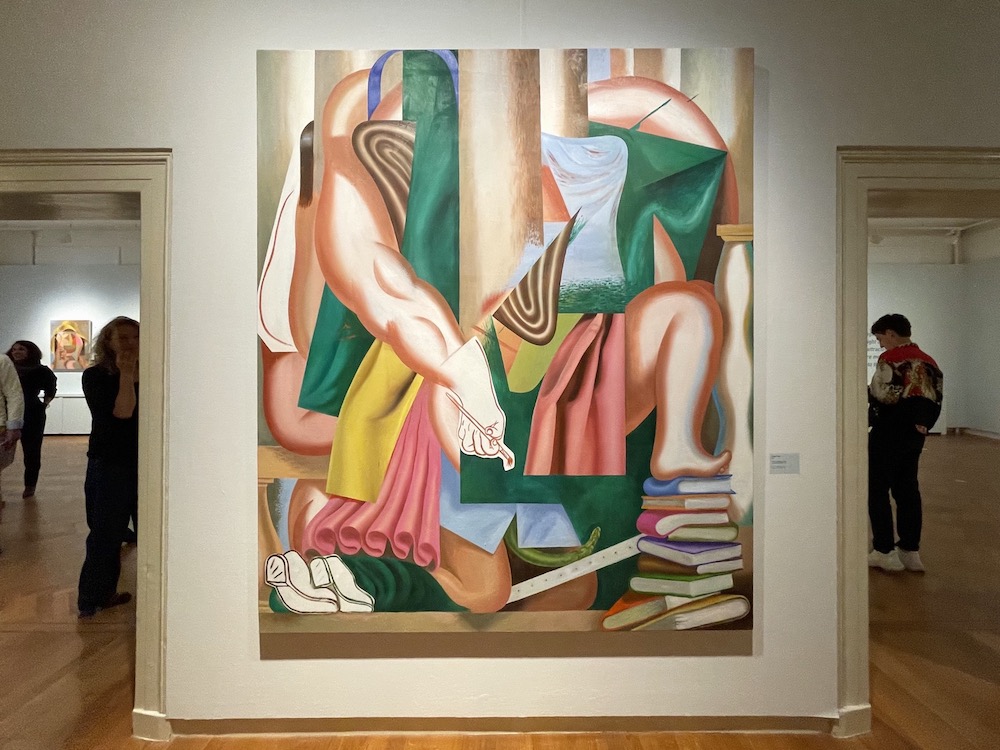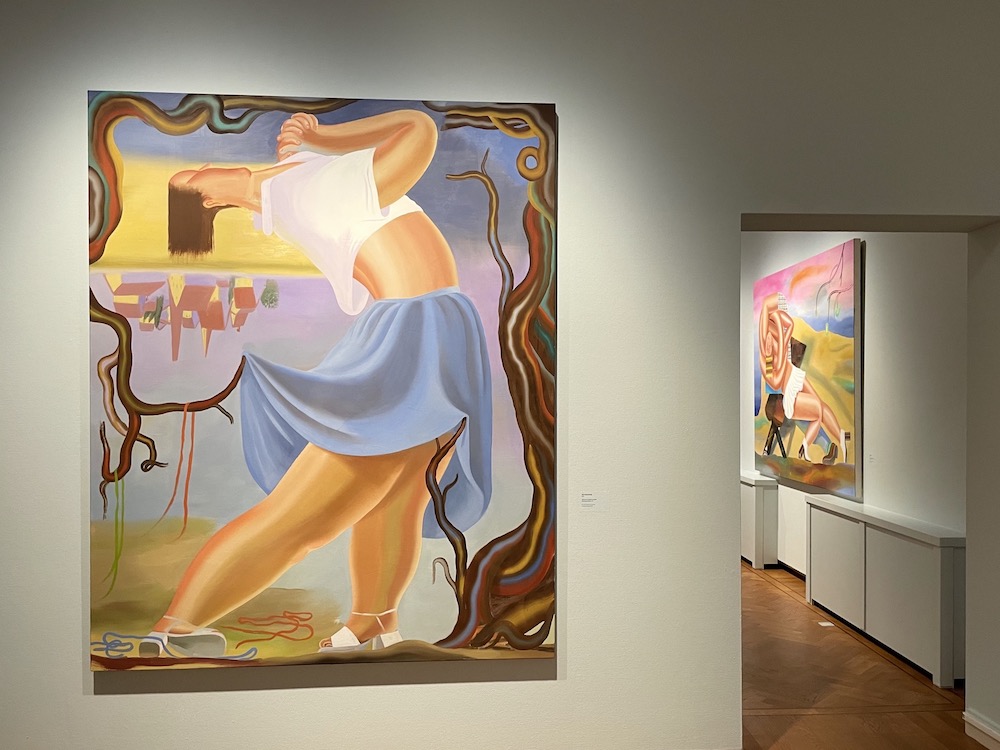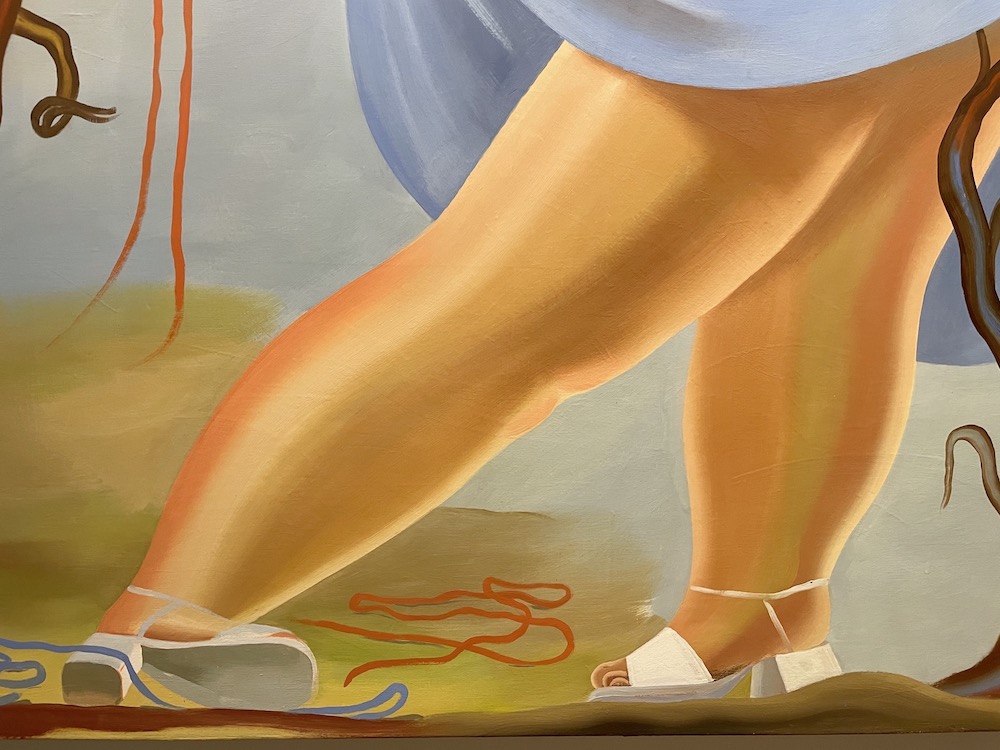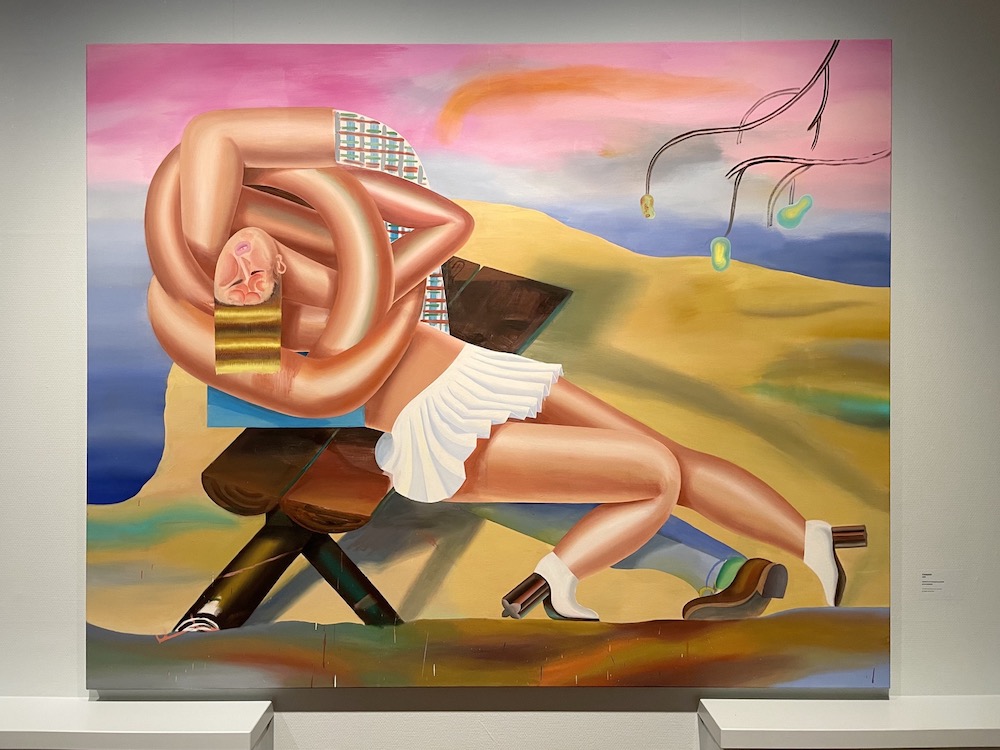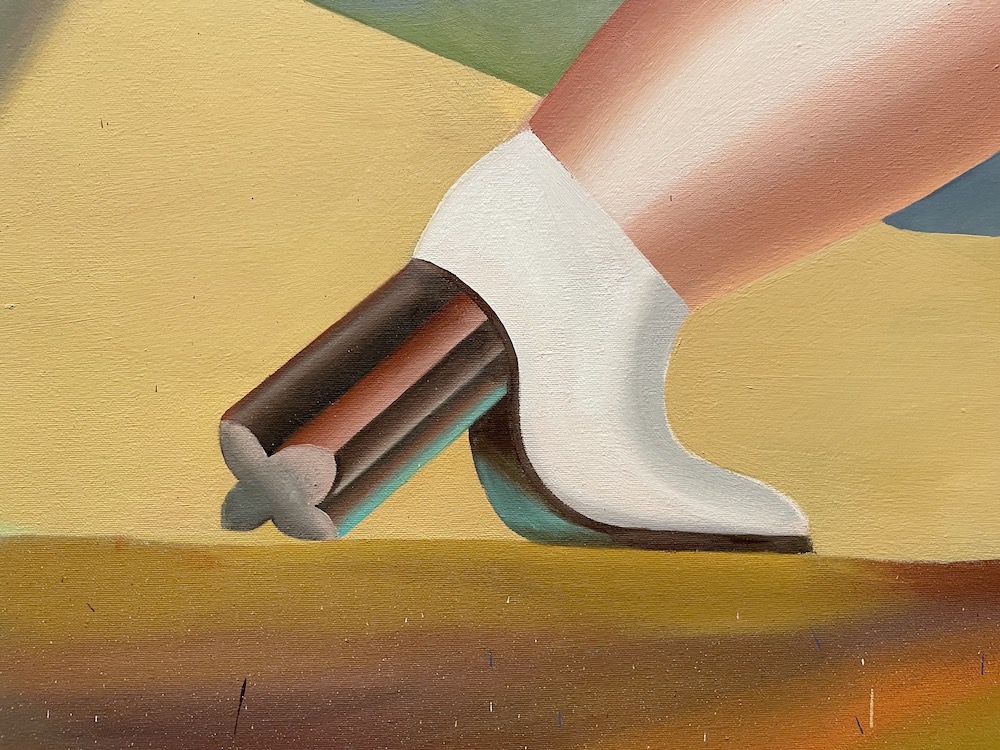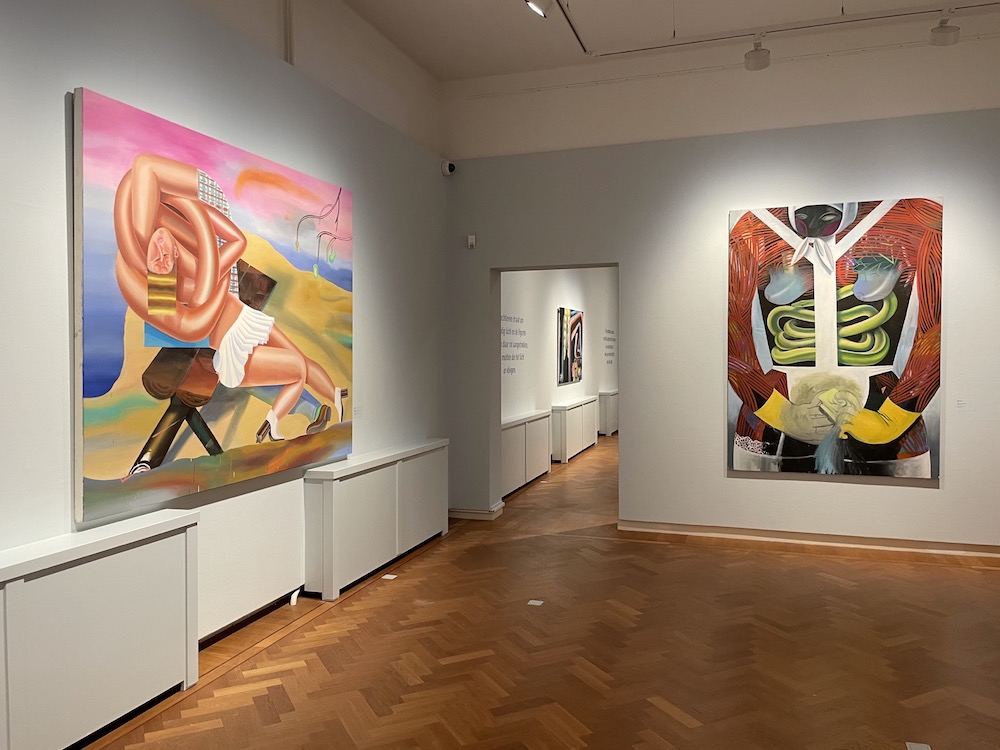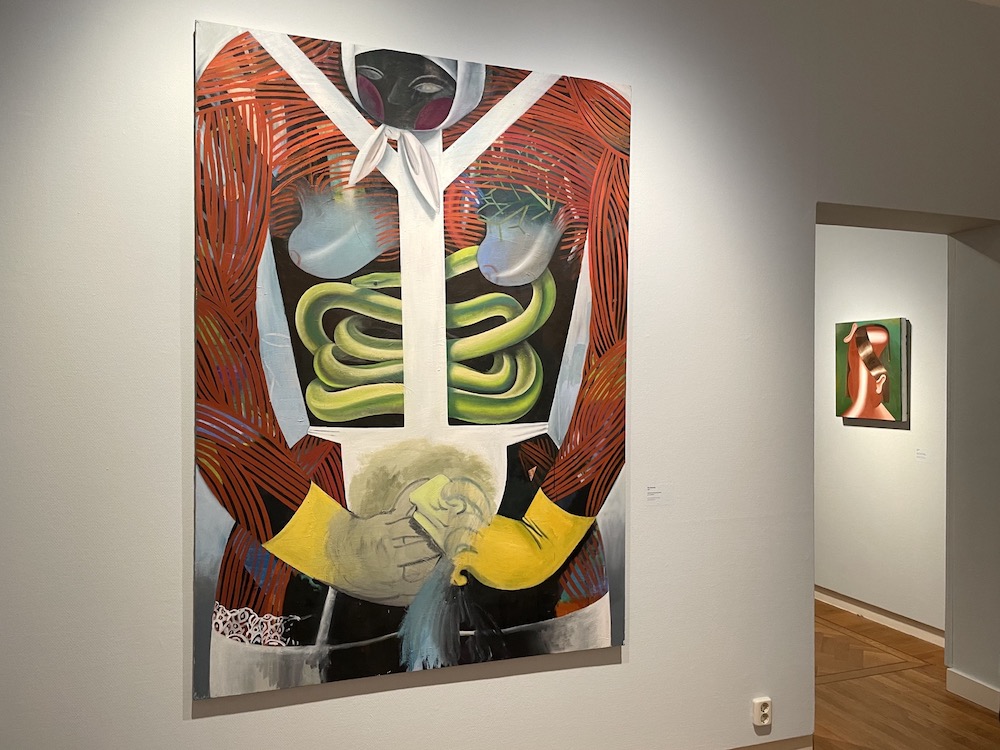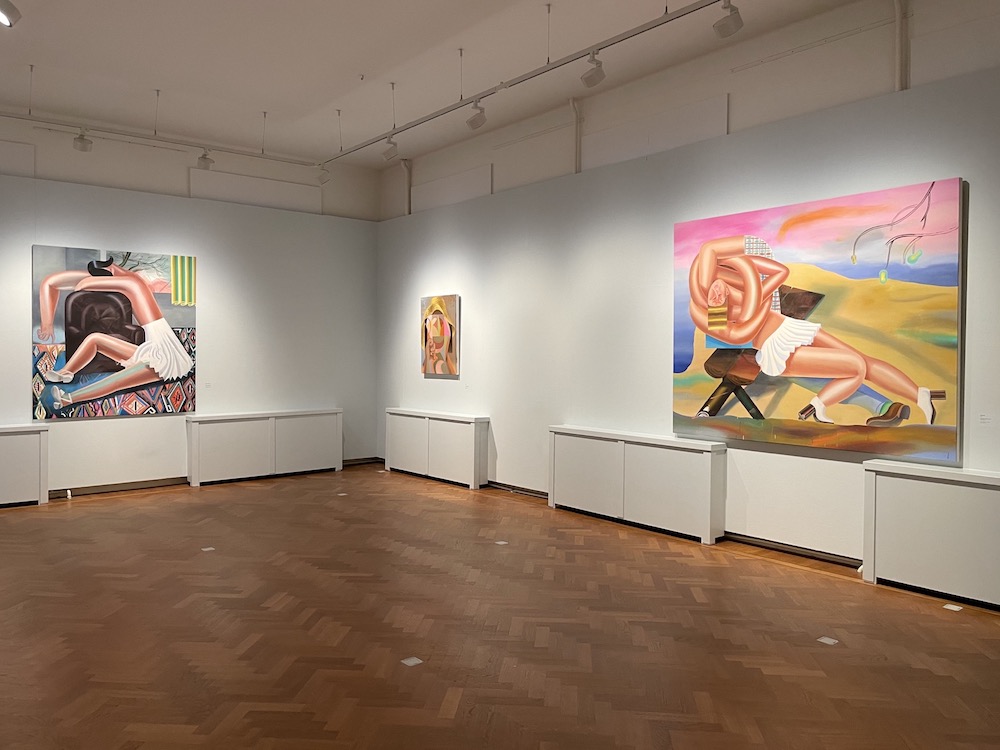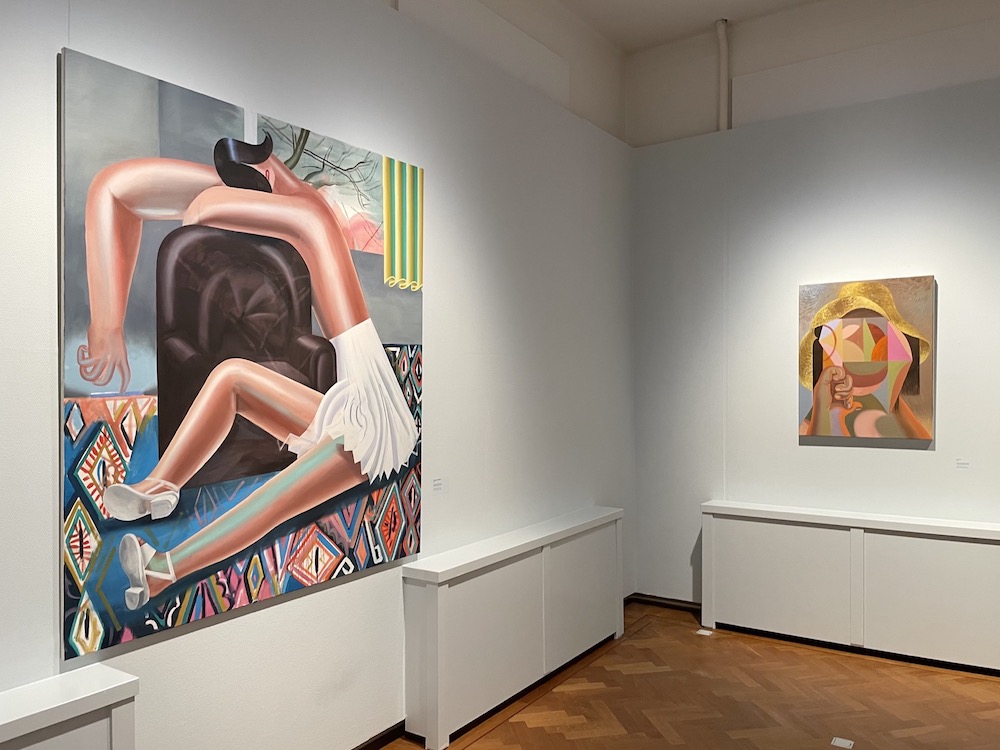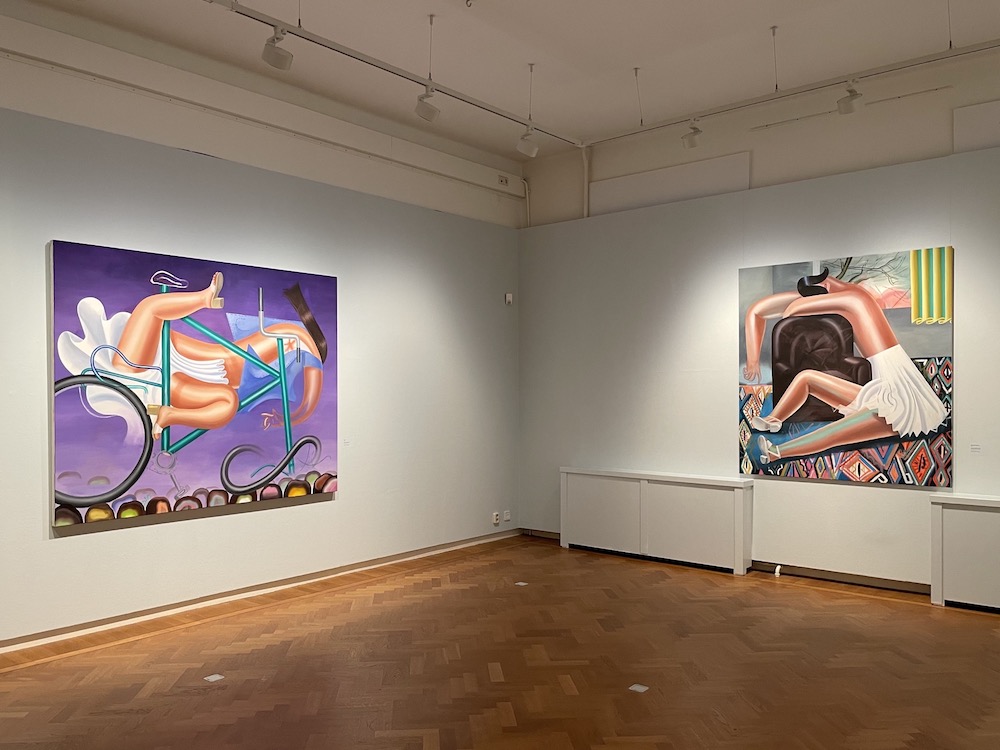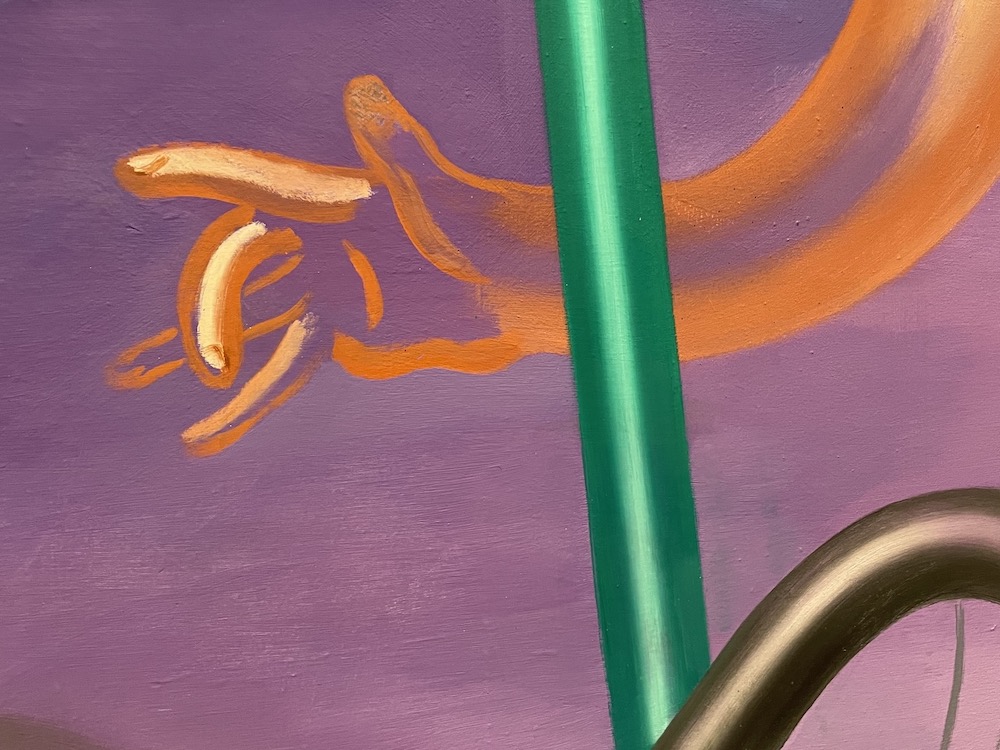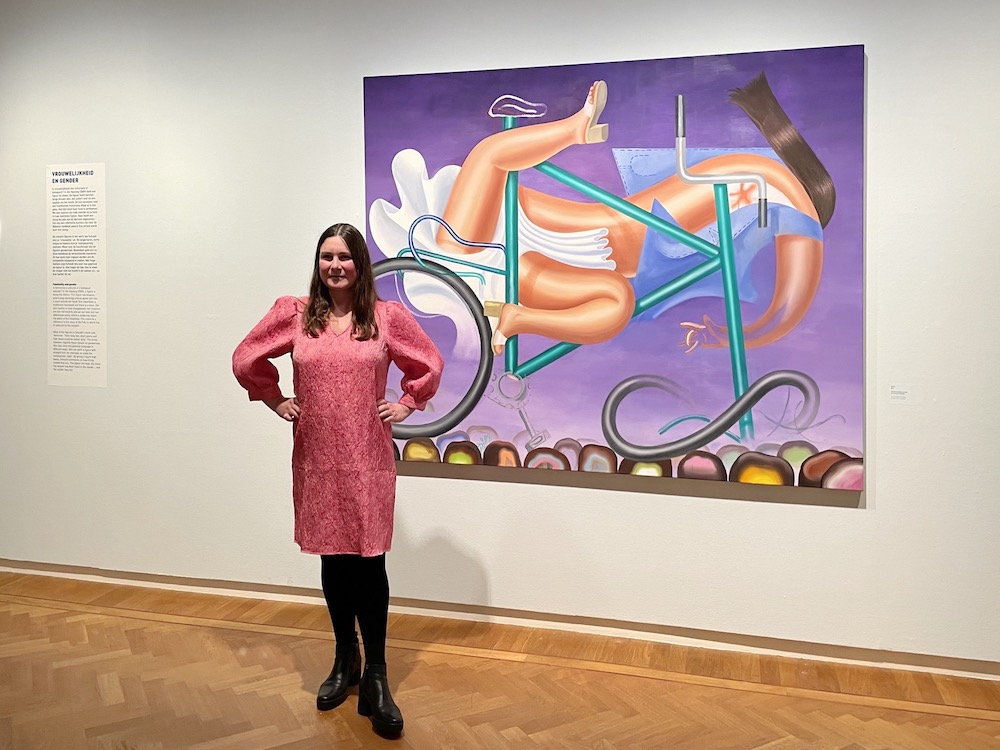The Drents Museum in Assen, The Netherlands, is currently showing Brutal Paradise, a retrospective-like solo presentation by Krtistina Schuldt who we've featured in the past. Coinciding with their major exhibition on Frida Kahlo's work and life, the presentation is continuing one of the leading Dutch cultural institution's ongoing efforts to introduce the important artists of the New Leipzig School.
Curated by Rannilt Pol who also curated the recent solo exhibition by Matthias Weischer, the exhibition is presenting Schuldt's oeuvre by putting the focus on the dominating visual clues in her work. Comprising paintings from 2009 up until the present day, the museum's rooms are introducing works that are featuring botanical motifs, technology, or speak of femininity and gender for example. And according to the artist, this is the first time someone had seen her work in that light, especially because she approaches all of the elements in the same light, as part of the same reality she's portraying. Both aesthetically and technically, she's painting human limbs and floral elements for example, by capturing their physical beauty but then intensively caricaturing their state, bringing up their flaws and ephemerality. As a believer in the idea that one's pleasure induces someone's suffering, the Moscow-born artist tends to capture both the beauty and the concealed ugliness of a moment. So by portraying a gesture of appreciation and love, a bouquet of flowers, she is in fact portraying the beginning of the flowers' ultimate end.
Within this concept, Schuldt often brings up the subjects of femininity, feminism, and gender roles, through the frequent portrayal of female figures. Although depicting an abundance of polished flesh, short skirts, or high heels, her muses are usually broken and twisted, regularly hiding their faces behind the long falling hairs or other objects. As seen in the part of the exhibition that presents elements of her process, these compositions are often built from collages, therefore a reconstructed caricature of common reality. Almost unfit for the role they found themselves in, these figures do appear powerful, with muscular legs and hands, suggesting the unused strength that's within them. Mostly shown alone or in the company of other female characters, they seem overly clumsy, twisting in their shoes, and falling over, while displaying a sense of determination and edginess with their clenched hands. Such tension between atmospheres is finally gripped in the compound of painting styles that cunningly conveys the context of those collaged concepts. Ranging from dotted, Van Gogh-like tapping sections, over the gradient rich voluminous section, to unfinished outlines or even paper cutout-like affixes, they become metaphors for our improvisational nature of being. Again, beautiful on the outside yet painful and fragmented as a whole, they are the essence of what Schuldt portrays as the Brutal Paradise.
Text and photos by Sasha Bogojev

